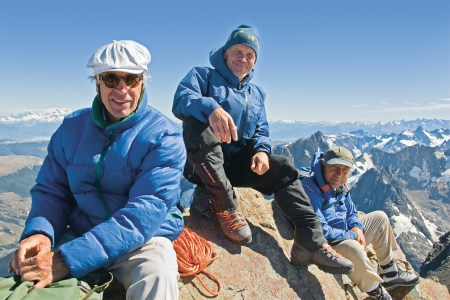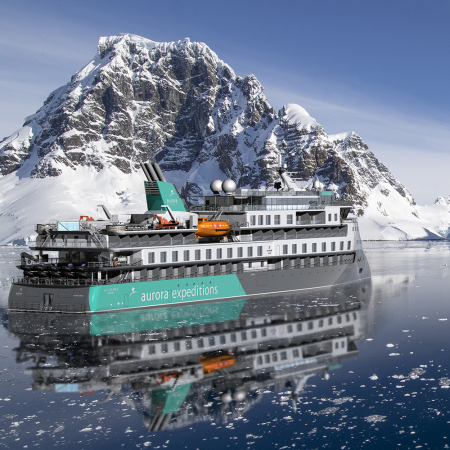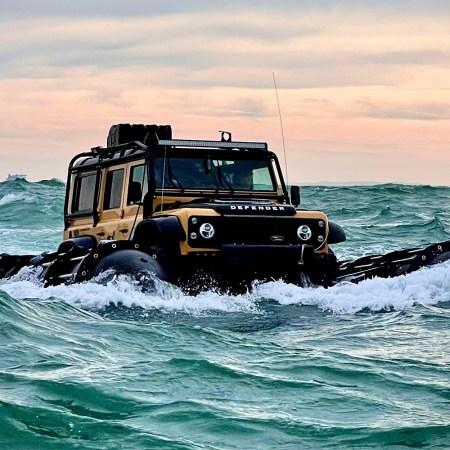Sir David Attenborough, that all-time great crusader for preserving our planet, once said that “No one will protect what they don’t care about, and no one will care about what they have never experienced.” As a man who has intimately experienced Earth’s wildest places and a pioneering entrepreneur who has created a space for others to do the same, few people know the meaning of those words more intimately than Patrick Woodhead.
As an explorer, Woodhead’s laundry list of white-knuckle endeavors include kayaking uncharted rivers in the Amazon, breaking the record for the fastest crossing of Greenland on foot and summiting previously unclimbed mountains in Kyrgyzstan and Tibet. Throughout these pursuits, Woodhead’s gaze also drifted south — far south — to Antarctica. There, in 2002, he was part of the youngest and fastest team to ever reach the South Pole. Shortly after, he led the first ever east-to-west traverse of Antarctica which took 75 days and covered 1,149 miles. It’s a career full of accomplishments that has also led to his being a fellow of the Royal Geographical Society and an ambassador of the Prince’s Trust.
Not one to rest on his laurels, however, Woodhead has also written four books (all adventure thrillers set in harrowing locations, naturally) and is a licensed private pilot — a skill he employs to explore the far reaches of South Africa with his two kids and wife, Robyn.
It was with Robyn, an accomplished explorer in her own right, that Patrick co-founded Antarctica’s only luxury adventure camp, White Desert, in 2005. It remains without equal as the planet’s most remote and extreme hotel, if you can call it that. White Desert’s inception and interior location also opened an entirely new side of Antarctica to travelers — at least, those with open checkbooks. Still to this day, the vast majority of people to ever step foot on the seventh continent have done so from cruise ships which skim the edges of the Antarctic Peninsula near the tip of South America. Being able to see and experience the continent’s vast and untouched interior remains an honor held, for the most part, by either scientists, explorers and guests at White Desert.
Those guests, until recently, have had two choices of camp: White Desert’s flagship location, Whichaway, and Wolf’s Fang, which opened in 2021. Here, five- to seven-night programs — which can include excursions to the South Pole, trips to view massive colonies of emperor penguins, cross-country skiing, ice climbing, snowmobiling, fat-tire biking and mountaineering expeditions — cost between $45,000 and $98,500 per person. For something comparatively more affordable, the company also offers a $14,500 South Africa-to-Antarctica day trip by private jet. This winter, a new offering emerges among the snow and ice.
Enter Echo, White Desert’s third, most luxurious and most futuristic camp. Debuting on December 1, Echo will boast six heated domes called “Sky Pods,” which will house king beds and en-suite bathrooms centered around a grouping of communal pods home to dining and lounging areas. The hero feature of the composite fiberglass structures are the floor-to-ceiling windows which frame the lunar-like landscape and contribute to the sense that this is a sci-fi colony on some distant planet. The outpost goes literal with the space theme, as inside each pod you’ll find original photos taken by retired NASA astronaut, former International Space Station commander and past White Desert guest, Colonel Terry Virts.
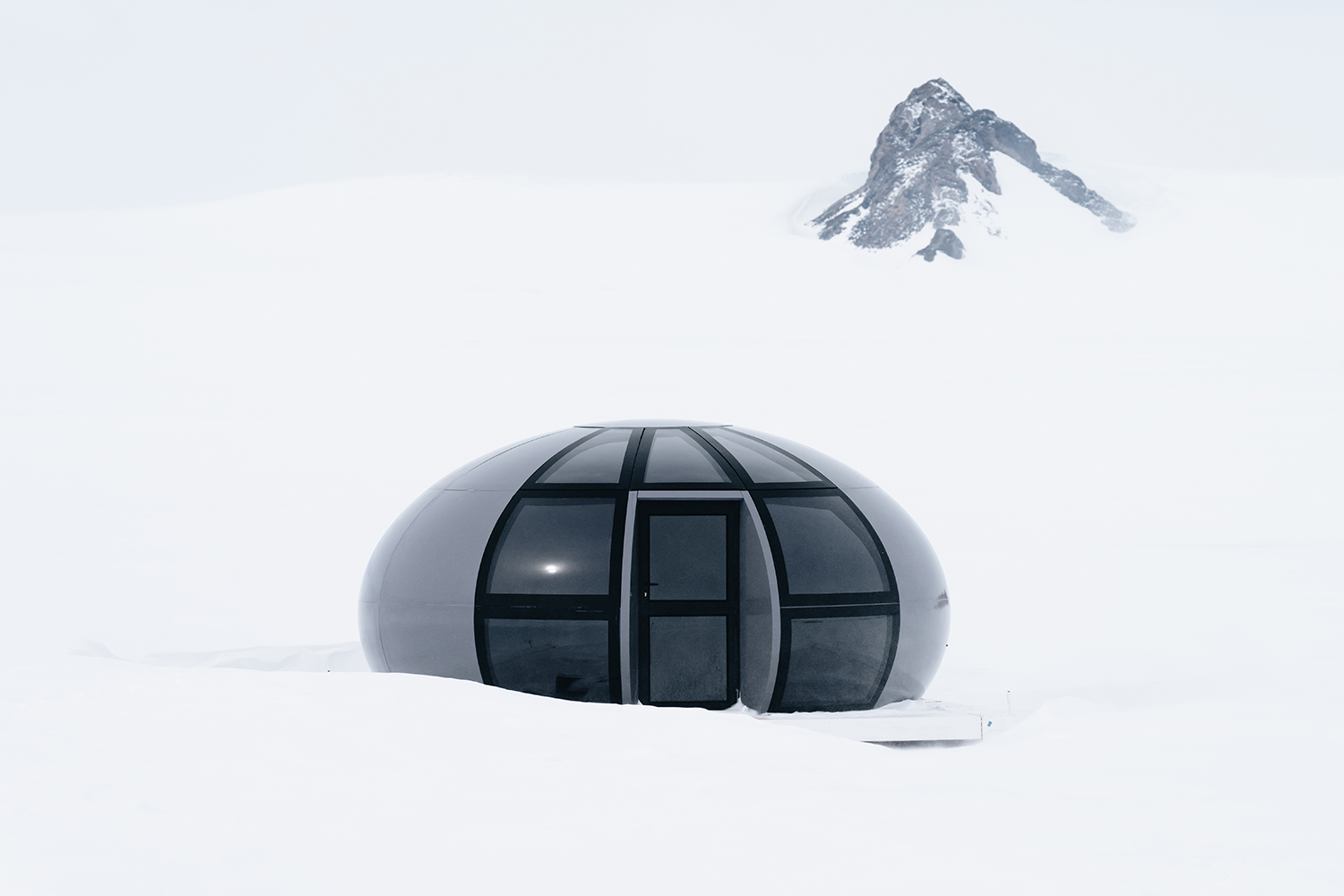
Each pod can accommodate two people, capping the capacity of Echo camp at 12, and comes with a price tag of $104,000 per person for an eight-night program. While this is a monumental rate, consider that the mere existence of White Desert, outside of being a testament to Patrick and Robyn’s perseverance, is a monumental logistical undertaking. Operating the camp during its short season — from the end of November to the beginning of February — requires a highly trained team of 80 to 100 staff members including pilots, camp managers, flight operations crew, communications specialists, luxury hospitality staff, chefs, polar guides, doctors and more. Also consider that a can of Coke, by the time it makes its way to the camp in Antarctica, has accumulated a landed cost of $36.
Getting yourself to White Desert also involves some logistics, though guests will be guided through the process by their team stationed in South Africa. The booking process involves expressing interest, securing deposits, completing medical forms, acquiring the right clothing and gear from their recommended packing list, and arriving in Cape Town two days ahead of your trip to partake in an orientation and safety briefing. From there, you’ll board one of White Desert’s planes, like their Gulfstream G550, embark on a five-hour flight, and land on the company’s very own blue-ice runway. Upon landing, you’ll be whisked to a private lounge, served a martini shaken with 10,000-year-old ice, and likely realize you would have paid double to find yourself here.
Wanting to know more about what is quite easily the world’s preeminent bucket-list hotel, I connected with Patrick to learn more about the inception of White Desert, the inspiration behind the new Echo camp and how his company is working to mitigate its environmental impact.
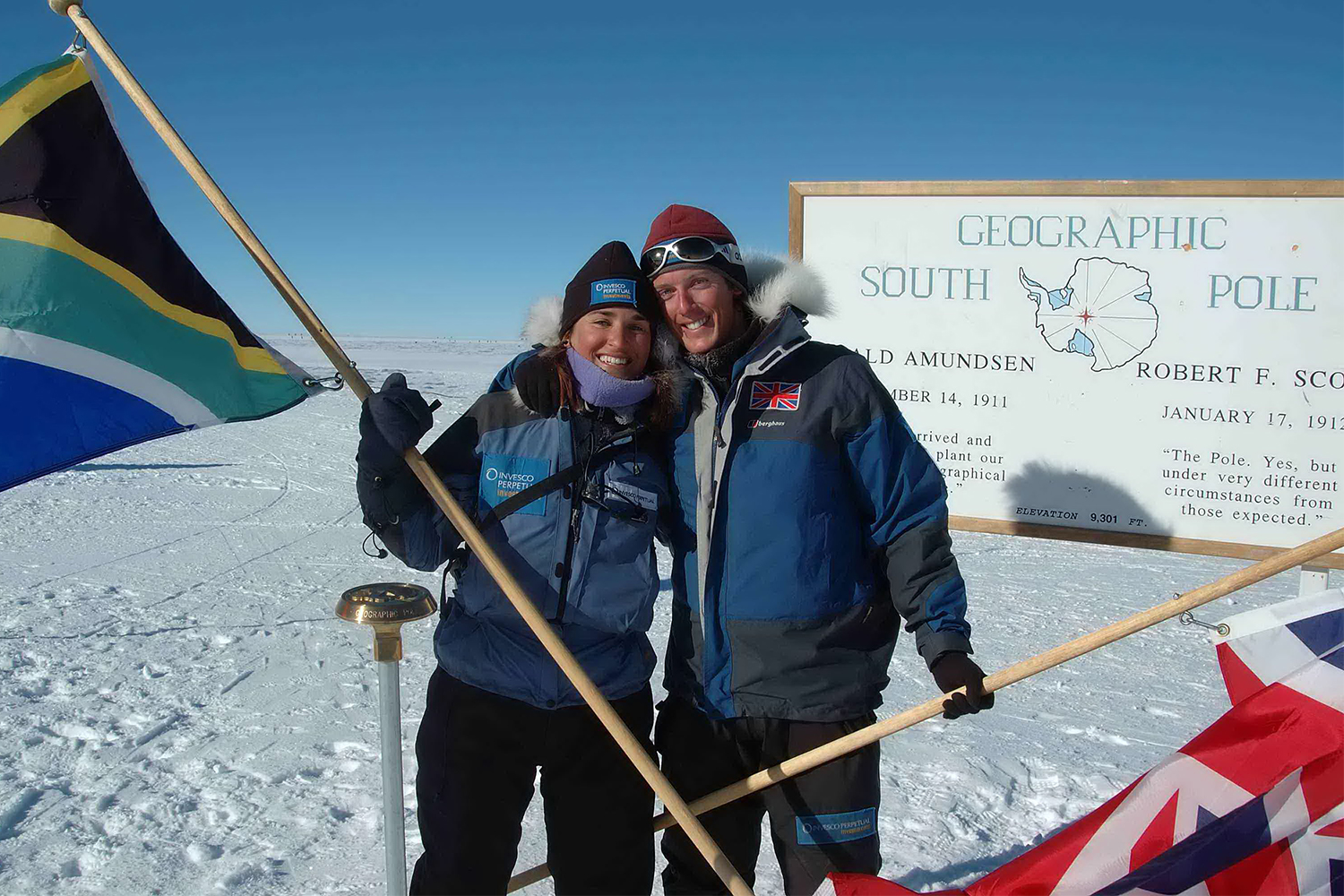
InsideHook: Why did you start White Desert?
Patrick Woodhead: The moment of inspiration for White Desert came during a 1,149-mile expedition on foot across Antarctica with three teammates. For four days a storm had raged outside and all of us were feeling a little defeated — we were getting low on supplies, and even worse, starting to tell the same stories! Then we began to wonder why only scientists and the occasional polar explorer ever got to see the real Antarctica, the interior of the Great White Continent.
So alongside my wife Robyn, we began to envision how we could share this region of otherworldly vistas and unforgettable wildlife encounters with people other than scientists and explorers. We wanted to guide people on a personal journey to the last true wilderness on Earth — a glacial landscape dominated by jagged peaks and iridescent ice formations.
A trip to Antarctica is likely not what the average person thinks of when considering where to go on holiday. What type of person visits White Desert?
We’ve been fortunate to have a diverse range of guests visit White Desert from around the globe including India, the U.S.A., Russia, China, the Middle East, the U.K. and Europe. And we have welcomed several notable guests in the past, including Prince Harry, Bear Grylls and the indomitable Buzz Aldrin, the former Apollo 11 astronaut. We believe that by sharing the continent with influential guests and change-makers, we are creating a new network of Antarctic ambassadors who will share the importance of conserving Antarctica for future generations when they return home.
The Playbook for a More Adventurous Life, Courtesy of “The Real Indiana Jones”
Catching up with longtime adventurer Rick Ridgeway, who recounts his best stories in the new book “Life Lived Wild”Stylistically, Echo camp is a huge departure from your existing camps, Wolf’s Fang and Whichaway. What inspired the futuristic, space-age design?
The creation of Echo was, in part, inspired by one of my favorite movies as a boy, Star Wars. The themes of exploring the far reaches of the galaxy and seeking adventure were key formative childhood influences for me. Plus, I am often asked what traveling to Antarctica is really like and my response is always the same: it’s the closest you can get to being on another planet.
We also had all these fabulous conversations about Mars and living on the moon with Buzz Aldrin and Colonel Terry Virts, who ran the International Space Station. Hearing them speak about the beauty of the Antarctic landscape — especially in comparison to the images we have of Venus and Mars — the fusion of “space” and “exploration” seemed entirely natural here as only in Antarctica do we get such vast moonscapes, needle-point mountains and incredible ice formations. Their comments — alongside strange facts such as the nearest neighbor to our camps is the International Space Station — also helped inspire Echo’s space-age design.
Traditionally, people have looked towards the past and made camps harking back to the golden age of exploration, with brass and leather and inspiration from the likes of Shackleton — and elements of our Wolf’s Fang and Whichaway camps reflect this. But with Echo we said let’s build something with a design that feels more forward-looking. What resulted were these cutting-edge fiberglass domes that look like something out of a lunar or Martian outpost. Inside, everything is ultra modern and looks far more akin to the interior of the Millennium Falcon than it does to an old explorer camp. Then you have these incredible floor-to-ceiling glass windows that give you this extraordinary view of the jagged peaks and monolithic mountain ranges from the comfort of your bed.

Getting to White Desert is a journey unto itself, and White Desert operates what is easily the world’s most remote runway. Can you tell us more about that and what it’s like landing there?
We are the exclusive operators of Wolf’s Fang Runway, which was named after one of the most iconic mountains in Antarctica, Wolf’s Fang Mountain (Ulvetanna in Norwegian). Due to the constantly shifting glacier ice, this 1.9-mile-long runway must be constantly monitored, resurveyed and recreated by our team each season. The runway is also graded and prepared for every flight, giving the ice similar friction to landing on a wet tarmac runway — and its ancient glacier ice is so strong that it can support the largest aircraft in the world, meaning that no specialist equipment is needed for the aircraft.
I have always loved flying; from vintage, piston-engine aircraft to the futuristic imaginings of the Millennium Falcon. There’s something wild and enigmatic about our desire to conquer the skies. Coming into land on Wolf’s Fang is still one of my favorite moments when arriving in Antarctica. I can agree with one of my teammates when he said, “Oh man, this never gets old.”
Speaking of flying to Antarctica, the impact of CO2 emissions from airplanes, especially private jets, is on people’s minds these days. Can you tell us a little about Sustainable Aviation Fuel and how, why and when White Desert will be using it?
We are the first Antarctic operator to introduce Sustainable Aviation Fuel (SAF) into Antarctica, have received the first test quantity of 40,000 liters, and will be rolling out SAF fuel across our Antarctic air and land fleet this season.
We recognize other operators globally have made pledges to blend small percentages of SAF into their usual fuel mix, but White Desert aims to replace all fuel used in Antarctica over a three-to-five-year period. There are currently production/supply challenges with traditional aviation fuel, which is a good thing as it means more operators want to use SAF — however it also means our timelines are longer than we would wish. Our shipment of SAF is sourced from California, and while this is an unavoidably long logistical chain, it still has a significant net reduction in total carbon emissions. Also, when the planes are flying over the continent, SAF produces less soot particles which reduces the amount of snow melt. As SAF production increases and becomes more widely available, White Desert will turn to a geographically closer source and look to increase our usage to encompass all aspects of operations.
I think most people perceive Antarctica to be the world’s last pure, unspoiled place. How else is White Desert mitigating its impact on the continent?
We have five key steps in place to minimize our impact including SAF, carbon offsetting, an environmentally conscious supply chain ensuring we have no single-use plastic and are taking ownership of responsible waste disposal. We use solar energy to heat our pods and minimize our use of fossil fuels. We also support and contribute to the local scientific community through our logistics program. With the launch of Echo this season we are also donating $1,000 per person per trip to our sustainability and conservation efforts. Going forward we are exploring more sustainability projects, namely seagrass meadow regeneration. Seagrass captures carbon up to 35 times faster than tropical rainforests and, even though it only covers 0.2% of the seafloor, it absorbs 10% of the ocean’s carbon each year, making it an incredible tool in the fight against climate change.

In your eyes, what is the most memorable experience a guest can have while staying at White Desert? And after spending as much time in Antarctica as you have, does visiting ever get old?
A highlight for guests is undoubtedly a trip to view the emperor penguin colony at Atka Bay, where guests can watch the tiny chicks walking off their parents’ feet for the first time. And when they understand the penguin’s story of survival through the harshest winter on Earth, the birds become even more extraordinary. I’ve seen grown men become emotional at this spectacle and it is truly mesmerizing.
I’ve been traveling to the continent for over 20 years. Antarctica has an almost otherworldly beauty that I want more visitors to discover for themselves. Most people are familiar with the images of the icebergs and rocky shores of Antarctica’s coastline; however, they are completely unaware of the interior’s strikingly varied landscapes, from the shimmering ice tunnels and iridescent blue ice waves to the imposing, jagged mountains rising from the ice sheet. There is nowhere else on the planet that encompasses the sense of freedom, staggering beauty and isolation of Antarctica. It has had a deep and lasting impact on me that keeps me coming back time after time.
This article appeared in an InsideHook newsletter. Sign up for free to get more on travel, wellness, style, drinking, and culture.

